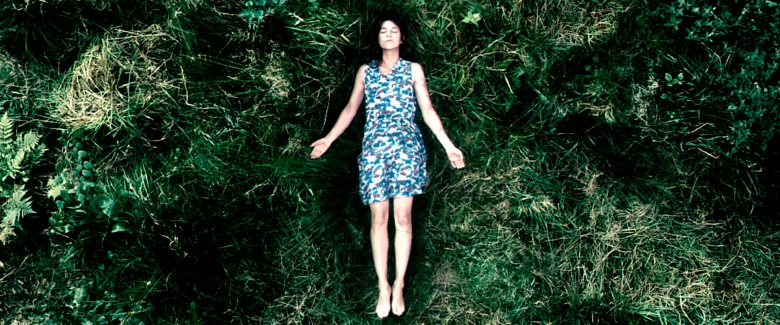
If “Die Hard” is a Christmas movie, then “Antichrist” is a Halloween one.
Lars von Trier’s haunting two-hander about a couple unraveling over the grief of their dead child transforms those horrible circumstances into a gripping, hellish descent replete with jump scares and sudden flashes of blood. It was “elevated horror” before that horrendous term was in vogue, an art movie engineered to immerse its audience in utter dread.
It’s also a stunning example of what the genre does well in disguise. Von Trier funneled his own bout of depression into a shocking eruption of storytelling possibilities. Yes, the filmmaker thanks Andrei Tarkovsky in the credits, but “Antichrist” owes a debt to everyone from Jacques Tourneur to Stanley Kubrick for its gradual escalation of disquieting moments. It’s an eerie movie with payoff, frightening at all the right parts, and never in ways that feel unearned. In that regard, “Antichrist” ought to make the rounds at the spookiest season of the year alongside any other nightmarish indulgence.
Perhaps the greatest depiction of a meltdown in isolation since “The Shining,” von Trier creates an unsettling emotional state through pure cinematic trickery. He fuses the tropes of a ghost movie, a cabin in the woods survival story, a creature feature, and torture porn into a tapestry of pure fear. From that operatic opening set to Handel to its final, hopeless fade to black in the forest, “Antichrist” illustrates what it feels like to be surprised by loss and trapped in its confines.
There’s a beautiful simplicity to von Trier’s construction of the scenario. A couple credited only as He (Willem Dafoe) and She (Charlotte Gainborough) head to an isolated cabin to process their loss. The cabin, called Eden, became an allegorical centerpiece for a series of chaotic developments. Dafoe, a therapist, forces pills on his wife that only seem to exacerbate her disturbed state, while he struggles with impotence.
From there, von Trier melts away any sense of confidence about the social constructs in play. The man is a patriarchal force until his wife smashes his penis before mutiliating her own genatalia in a sequence designed to make every possible viewer flinch. You feel their pain in acute visceral terms, and hate the movie for doing that to you, much as they hate the world for the brutality it inflicts on them. It’s an act of empathy on the part of the characters at the expense of the audience.
Only von Trier would go to such extremes. When I watched “Antichrist” alongside 2,000-odd people at the first Cannes screening in 2009, I got a sense of what it must have been like to witness the outcry to “The Rite of Spring” in 1913. Von Trier played the room with mischievous precision — and he got roasted for it. The boos were instant and constant, alongside nervous laughter, and a journalist confronted von Trier at the ensuing press conference to demand “why you would make this film.” The filmmaker smirked. “I feel that you are all my guests,” he said.
There’s an argument to be made that this kind of nihilistic cruelty crosses a moral line. I don’t buy it. Von Trier understand the power of filmmaking to create deep unease, but he doesn’t do it as empty provocation. “Antichrist” is a far cry from “Saw” or “Hostel.” It’s touching and terrifying, but more than that, it’s touching because it’s terrifying: It makes you feel, and understand, what it’s like when all is lost.

“Antichrist”
©IFC Films/Courtesy Everett Collection
Did I mention it’s also, quite suddenly, hilarious? “Chaos reigns” has been a popular slogan and readymade meme for years but few will recall its path to that stature. The crowds at Cannes giggled on cue when a fox jumped out at Dafoe and spoke those immortal words in an ominous-yet-funny twist for the ages, but it wasn’t until “Antichrist” resurfaced on the fall circuit at Austin genre festival Fantastic Fest that “chaos reigns” became a mission statement.
Shortly after the first screening, the hashtag “#chaosreigns” was trending on Twitter before that was a thing. The festival hosted a “Chaos Reigns Karaoke Party.” From that point forward, the movie was an instant cause célèbre for lovers of extreme cinema, people who felt seen rather than repulsed by von Trier’s agenda. T-shirts and tattoos followed soon after. The horror audience rediscovered the movie when the highbrow festival circuit let it down. It was eventually released just in time for Halloween, hitting limited U.S. theaters on October 23, 2009.
“Chaos reigns” as a mantra could be applied to much of von Trier’s work. The filmmaker is often referred to as a provocateur, unlike horror filmmakers who operate more cleanly within the traditional boundaries of the genre, and are just seen as doing what they do. Because nothing else in von Trier’s filmography aside from “The Kingdom” turns up the horror dial in such acute fashion, “Antichrist” has never been truly appreciated as a bonafide horror movie.
But trust me: Turn down the lights and draw the shades the next time you pop it on and you’ll experience a scary movie of the highest order.


